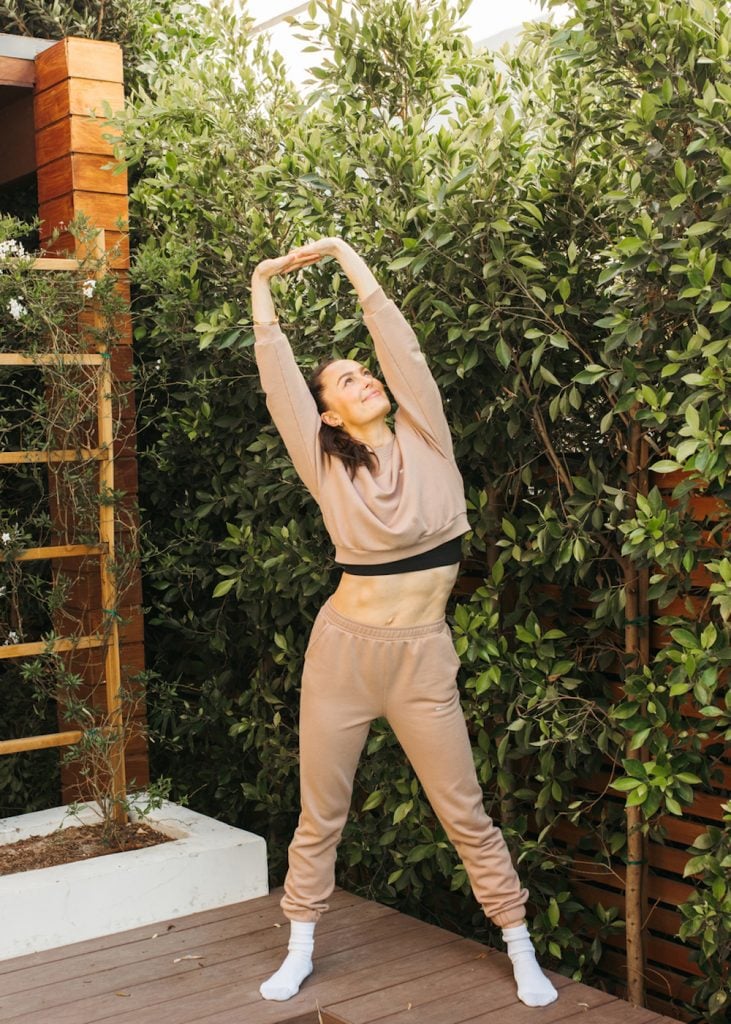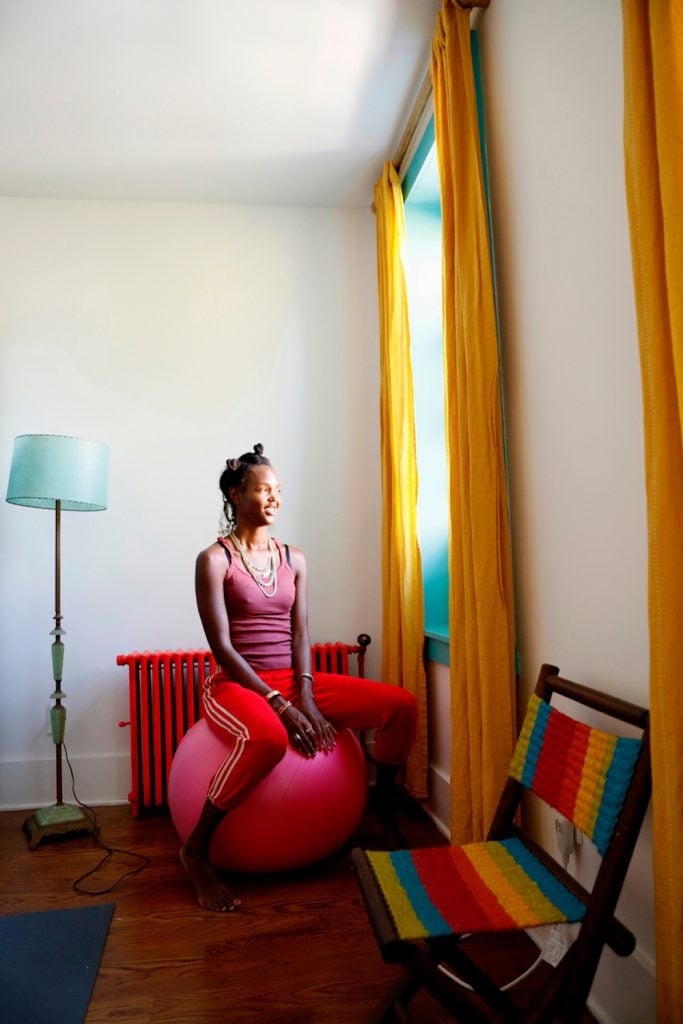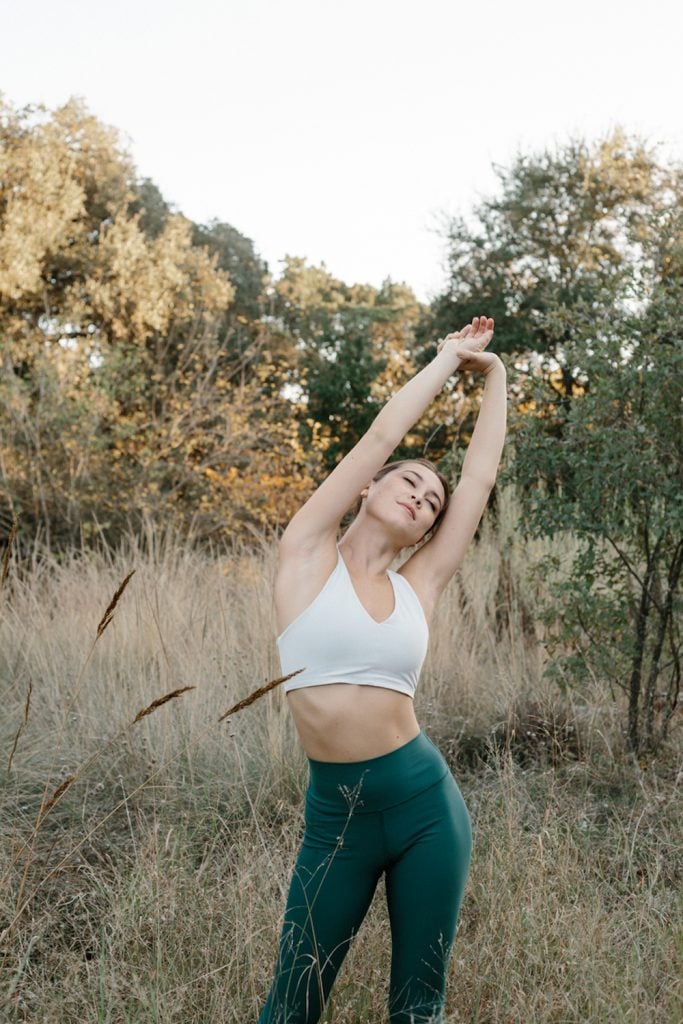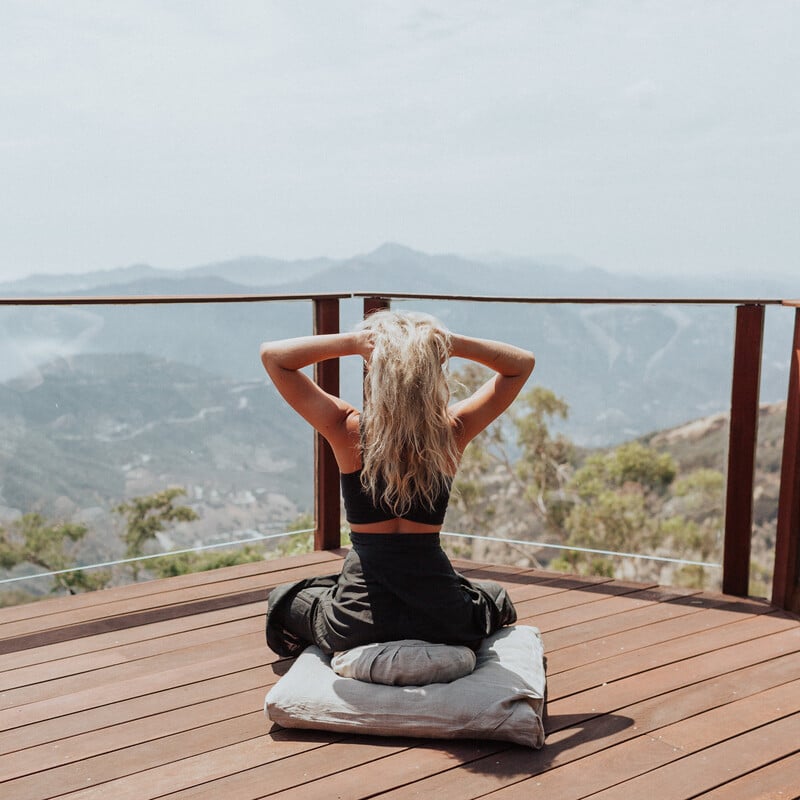When it comes to working out, many trainers, influencers, and fitness programs will try to convince you there’s only one right way to do it—and a million wrong ways. But as is true for nearly all areas of health and wellness, the best option is the one that works best for you. That’s why the trend of cycle syncing workouts is one we’re happy to on board for.
As an Integrative Nutrition Health Coach, a Pilates instructor, and a wellness enthusiast who holds a Bachelor’s degree in Nutrition Science, diving deep into the details of fitness routines and foods that help you feel your best is always top of mind for me. The current health question I’m pondering? Understanding how to work out on your period in a way that can actually boost your fitness rather than feel like an annoyance.
Of course, with the menstrual symptoms many of us experience, cycle syncing workouts may sound less than ideal. But after consulting trusted sources and going down endless rabbit holes, I’ve emerged with answers that shed insight into gentle and effective ways to make cycle syncing workouts a part of your life. And of course, feel your best.
Featured image from our interview with Nitsa Citrine by Claire Huntsberger.
- The Difference Between Male and Female Hormones
- Explaining the Gender Research Gap
- Why It's Important to Track Your Menstrual Cycle
- How to Track Your Menstrual Cycle
- Cycle Syncing Workouts: Exercise Tips for Every Phase
- The Menstrual Phase (Day 1-5)
- The Follicular Phase (Day 6-13)
- The Ovulation Phase (Day 14)
- The Luteal Phase (Day 15-28)
- What's Next?


The Difference Between Male and Female Hormones
When it comes to working out on your period, there’s an obvious, but crucial point that can’t be skipped over: “women are not small men,” says Dr. Stacy Sims, an exercise physiologist. Unfortunately, the opposite is still influencing many parts of the health and fitness world today.
Every day, men wake up with relatively the same amount of testosterone. This results in a generally consistent mood and energy level. Must be nice, huh? Women, on the other hand, specifically those who are not using birth control, don’t have a consistent “drip” of hormones.
Whether we like it or not, the female body is preparing for a potential pregnancy every month. Every day is different, and the levels of estrogen, progesterone, and even testosterone vary depending on the phase of our menstrual cycle.


Explaining the Gender Research Gap
Our male-centric healthcare system is one of the key reasons why women have been intentionally left out of most scientific research. Thankfully, efforts are underway to close this gap, and more is being done to shed light on the importance of properly representing women in medical studies.
Alyson J. McGregor speaks up about the dangers of our historically male-focused approach in her book, Sex Matters. In it, she shares a story about how a female patient almost walked out of the hospital while having a heart attack. Because her symptoms were different from the classic male-centric model, she was turned away by cardiologists and her symptoms were classified as “anxiety.” McGregor fought against this assessment, leading to the discovery of an occlusion in the patient’s main artery. The patient was promptly administered a life-saving procedure.


Why It’s Important to Track Your Menstrual Cycle
When I hear about period tracking, it’s usually because a friend wants to get pregnant or avoid getting pregnant. So I was intrigued to learn that period tracking can improve physical fitness. After diving into the research, I’m now convinced that tracking your menstrual cycle is imperative for all menstruating people. Not simply for pregnancy or physical fitness, but for living in harmony with our bodies.
Unfortunately, this isn’t something we were taught from a young age. But many medical and health professionals are calling the menstrual cycle, “the fifth vital sign,” and more research, conversations, and movements within this space are becoming more inclusive in scope.
Download our cycle syncing planner to support your body throughout the month.
How to Track Your Menstrual Cycle
There are many ways to track your cycle, and as is true for all areas of health and wellness (I can’t help but repeat it!), the best option is the one that supports you. There’s no shortage of highly-recommended apps. The FitrWoman app is my personal favorite because it was developed by the leading researchers in this field (the same team that consults the US Women’s Soccer Team!). If it’s good enough for them, it’s definitely good enough for me.
There are, of course, many other methods. Planned Parenthood offers an in-depth guide to using the calendar method, where you’re tracking the length of your menstrual cycle over the course of several months. For more resources, consult your healthcare provider to connect you with an option that works best for you.
Learn more about how to structure your month around your body’s natural rhythms with this cycle tracking guide. If you’re looking for more, check out this guide on balancing your hormones naturally.


Cycle Syncing Workouts: Exercise Tips for Every Phase
There are certain points in our menstrual cycle when women exhibit peak performance, develop muscle more efficiently, and experience less soreness after a workout. We even burn more calories in the later phases of our cycle!
Below, I’m diving into each phase of the menstrual cycle, breaking down how to work out on your period, and how our hormones affect our mood, motivation, and energy levels.
A quick reminder: every body and person is different. These recommendations come from the latest scientific research, but there is still a lot to be uncovered.
The Menstrual Phase (Day 1-5)
Your menstrual cycle begins on the first day of your period. While many people think it’s best not to exercise on this day, it is, in fact, OK and safe to do so. Fun fact: British long-distance runner, Paula Radcliffe allegedly broke the world record during her period—cramps and all. Compared to other phases of our cycle, our energy and performance dip a little during the menstrual phase, but exercising can help boost our mood and alleviate PMS symptoms.
Hormones at play: Low estrogen and progesterone
How they affect us: Low energy and PMS symptoms
The best exercise for this phase: Gentle movement like walking, yoga, or pilates. If you’re wanting more intense workouts, strength training and HIIT is recommended.


The Follicular Phase (Day 6-13)
The follicular phase is a great time to schedule intense workouts such as strength training and to focus on building muscle. According to The Female Factor: The Whole-Body Health Bible for Women, “estrogen helps boost energy levels, prompts muscle-building, and enhances recovery, including reducing next-day muscle soreness and swelling.” Estrogen also acts as an appetite suppressant, so cravings are not as prevalent.
Hormones at play: An increase in estrogen and testosterone
How they affect us: Increased energy and motivation, reduced appetite, high pain threshold, and high spatial cognition. It’s also easier to build muscle and recover faster.
The best exercise for this phase: Any and every type of movement. This is the time to push yourself with new and challenging workouts. If building muscle is your goal, focus on weight training and HIIT.


The Ovulation Phase (Day 14)
Lasting only 36 hours, this is the shortest phase of our cycle. But due to high levels of estrogen and testosterone, we experience peak energy, motivation, and physical strength during the ovulation phase.
Hormones at play: High levels of estrogen and a surge of testosterone
How they affect us: Increased pain tolerance and heightened social skills, motivation, energy, confidence, and levels of dopamine.
The best exercise for this phase: Physical performance reaches its peak. Running, spinning, weight-lifting, and high-impact exercise are all great ways to move during this phase.


The Luteal Phase (Day 15-28)
Right after ovulation, estrogen drops and progesterone starts to rise. Our body is working hard, and studies have found that we require more energy (calories) during this phase, leading to cravings and an increase in appetite.
In Fix Your Period, Nicole Jardim, a certified Women’s Health Coach, writes:
“This is the time in your cycle when the decks are cleared (you no longer have the estrogen blinders on), and you begin examining what’s working and not working in your life. How’s your job going? What about your relationships, or even certain friendships? […] Take a minute to reflect on the deeper reasons for your feelings.”
Early Luteal Phase
Hormones at play: High progesterone, low estrogen and testosterone
How they affect us: Increased focus, low oxytocin levels, improved aerobic performance, rise in body temperature, fluid retention, bloating, reduced coordination and reaction time, blood sugar instability, and low blood sodium levels.
The best exercise for this phase: Moderate intensity, cardio (kickboxing, running, and spinning), longer workouts due to increased endurance during this phase.
Late Luteal Phase
Hormones at play: High progesterone, low estrogen and testosterone
How they affect us: Similar effects as the early luteal phase; oxytocin is at its lowest, low energy levels, high irritability, and sleep disruptions.
The best exercise for this phase: Prioritize recovery and opt for low-intensity workouts like walking, swimming, hiking, and yoga.


What’s Next?
Track your cycle, journal your findings, and continue to learn about your menstrual cycle. The more awareness and intention you bring to your menstrual cycle, the more you can understand what works for you and what doesn’t.
I’m already planning on overhauling the way I approach not only my cycle syncing workouts, but big work projects, social events, and even date nights. Remember: This is just the beginning! I’m so excited to continue to learn—and unlearn—how to harness the power of my cycle.
This article is for informational purposes only. It is not, nor is it intended to be, a substitute for professional medical advice, diagnosis, or treatment and we recommend that you always consult with your healthcare provider.






